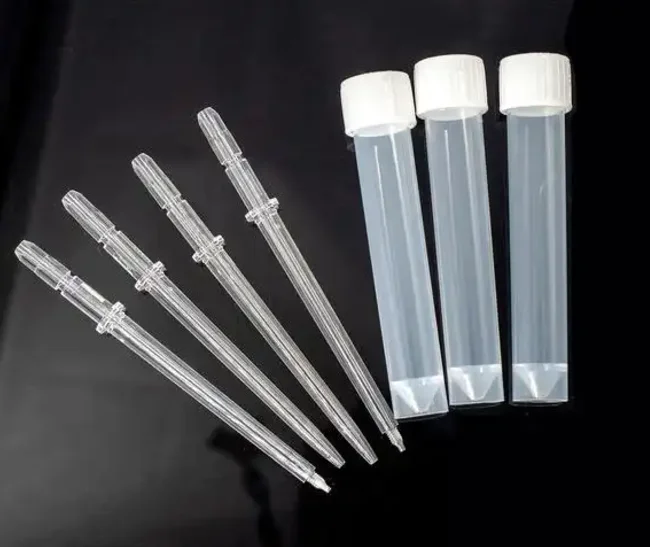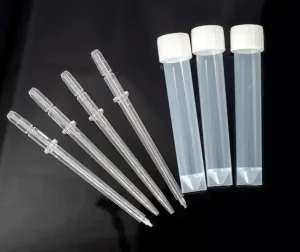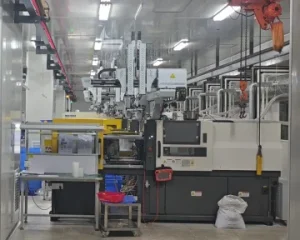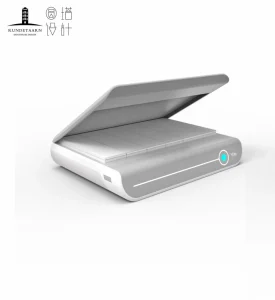In the highly controlled medical device industry, precision, reliability, and compliance are not open for negotiation. As medical technologies continue to evolve, the need for quality and cost-effective components has grown. Among the most critical processes in the manufacture of medical devices, injection molding plays a key role in making parts with high consistency and great accuracy. While injection molding brings many opportunities, it also raises a number of challenges for both manufacturers and businesses.
In this blog, we discuss the key challenges and opportunities in injection molding for medical devices, including the requirement of partnering with a reliable injection molding service provider. We are going to show how Silkbridge is one of the leading premium injection molding service providers serving the medical device industry.
The Growing Demand for Injection Molding in Medical Devices
Injection molding has rebranded how one looks at medical device manufacturing-from diagnostic tools and surgical instruments to drug delivery systems and disposable parts. The process assures of high-volume production, with the surety of high standards necessary in the medical field.
The global medical device industry will see exponential growth, whereby the requirements for manufacturing more devices in higher volumes with economic production and meeting regulatory requirement will be necessary. Many such increasing demands for injection-molded devices mean most of the medical device manufacturers are taking the options available in precision injection molding for their requirements.
Challenges in Injection Molding for Medical Devices
While injection molding indeed offers several benefits in medical device manufacturing, there are also challenges to be conquered by businesses for a successful and compliant production process.
1. Regulatory Compliance and Certification Requirements
Apart from all the above-mentioned molding challenges, injection molding related to medical devices is very closely related to regulatory compliance. Medical devices fall under severe guidelines and certifications such as FDA approval in the U.S., CE marking in Europe, and ISO 13485 certification. The manufacturers should ensure that their injection-molded components comply with all regulations to guarantee their safety and efficacy.
Challenge: Most of these regulatory requirements involve such heavy documentation, testing, and validation that the time-to-market becomes considerably delayed.
Opportunity: Companies that partner with an experienced injection molding service provider can tap into in-depth knowledge regarding medical device standards. This would mean that every component would meet the highest regulatory criteria without sacrificing one dot of quality.
2. Material Selection and Biocompatibility
All these medical device components have to be fabricated from biocompatible materials. That is, materials should not cause any adverse health effects either in patients or in health professionals. Some usual materials for medical applications include polypropylene, polycarbonate, and silicone, although one specific material has to be chosen based on the part in hand.
Challenge: The material of choice has to satisfy a number of criteria concerning biocompatibility, durability, sterilization compatibility, and cost-effectiveness.
Opportunity: Through the access of advanced material selection knowledge, injection molding service providers will be able to assist organizations in the selection of the best materials for their devices in order to ensure the final product is safe, durable, and well within the ambit of industrial regulations.
3. Precision and Consistency in High-Volume Production
Medical devices require complex designs with highly precise parts to function. It is very important to have high-volume production so that consistency can be maintained to ensure that every component is as per the requirement.
Challenge: Achieving high precision in injection molding can be challenging, especially when scaling production to meet large quantities. Inaccuracies in molding can result in defects, which in turn, impact product functionality and patient safety.
Opportunity: The companies that can utilize the latest injection molding equipment and technology can provide precision manufacturing with a minimum defect rate. More sophisticated machinery may be comprised of CNC machines, EDM units, and automated injection molding systems in order to deliver consistency to the level required by the medical-grade component.
4. Cleanroom Requirements for Medical-Grade Injection Molding
Manufactured medical devices require a manufactured environment to avoid contamination of the products. This is important for those devices that could be used either in sterile conditions or in direct contact with the patient.
Challenge: Maintaining a cleanroom environment that adheres to strict standards (e.g., ISO 14644 for cleanroom classifications) requires constant monitoring and investment in infrastructure. This can be a significant challenge for manufacturers that lack specialized facilities.
Opportunity: With this in mind, partnership with an injection molding service provider in a dedicated cleanroom environment for medical-grade components allows minimization of the risk of contamination and enables the products to reach the required industry standard of safety and hygiene.
Injection Molding Opportunities in Medical Devices
While there are many challenges for injection molding in medical devices, they bring along opportunities as well, which businesses will rise up to through innovation and investment in good quality manufacturing processes.
1. Cost-Effectiveness through Automation
Efficiency increases and production cost goes down with the advancement of automated injection molding systems. Automated systems can run large volumes of production with limited human intervention, hence reducing labor costs and improving cycle times.
Opportunity: Manufacturers can offer cost-effective solutions to clients with the help of robotic systems and automated processes, thus enabling them to scale up their production without compromising on quality.
2. Product Design: The Level of Customization and Flexibility Possible
Injection molding allows immense flexibility in product design. Whether it is designing a medical device to suit particular patient needs or to serve a special application, injection molding can accommodate intricate geometries in complex designs.
Opportunity: Medical companies can leverage custom injection molding services to design and create customized components for meeting particular needs of the provider or patient, that leads to improved patient outcome or an enhanced functionality of a device.
3. Shorter Lead Times and Faster Time-to-Market
Injection molding makes production cycles shorter, thus reducing lead times to bring medical devices to market even easier. This may be particularly important in fast-moving medical technology where time to market can often relate directly to competitiveness.
Opportunity: This will help the companies in reducing lead time by a great deal by enabling fast prototyping and efficient production processes; thereby, they are able to provide their products to the market more rapidly and gain an edge over others in the market.
4. Sustainable Manufacturing Practices
As more and more companies around the world are thinking green these days, it does behoove medical devices also to join in efforts concerning sustainability. This manufacturing operation can be a part thereof as well with virtually little waste being generated aside from recyclable materials.
Opportunity: By partnering with such injection molding service providers whose principle is sustainability-oriented, this will also assure good environmental footprints and combine well with the demands from the customer side.
Silkbridge: Your Trusted Partner for Medical Device Injection Molding
Among high-quality injection molding services for medical devices, one happens to be Silkbridge Electronic Technology. Silkbridge combines the best in British innovation with Chinese efficiency in manufacturing for some of the finest medical-grade injection moldings for more than a decade.
Here’s why Silkbridge is the perfect partner for your injection molding needs:
ISO-Certified Facilities: Silkbridge manufacturing is built upon the most stringent quality control standards in producing medical device components to ISO 9001 and ISO 13485 certification.
State-of-the-Art Equipment: Equipped with 100 robotic injection molding machines, as well as many other high-level technologies, Silkbridge can provide for very tight tolerances and repeatable consistency with each manufactured part.
Material Expertise: Silkbridge can avail its customers of premium medical materials such as polypropylene, polycarbonate, and silicone, following the standards of biocompatibility and durability.
Cleanroom Production: Every facility of Silkbridge has been declared a cleanroom, with maximum hygiene and safety levels in place that sterilize the medical-grade parts with utmost sterilization and contamination controls.
Comprehensive Services: From design and prototyping to mass production, are offered at Silkbridge, making it a one-stop solution for all the medical device manufacturing needs of businesses.
Whether you are developing diagnostic tools, drug delivery systems, or other medical devices, Silkbridge will ensure that your components are manufactured to the highest standards of quality, safety, and precision.
For more information on how Silkbridge can support your medical device manufacturing needs, contact us today via WhatsApp at https://wa.me/8618122838771 or call +86 8618122838771.






